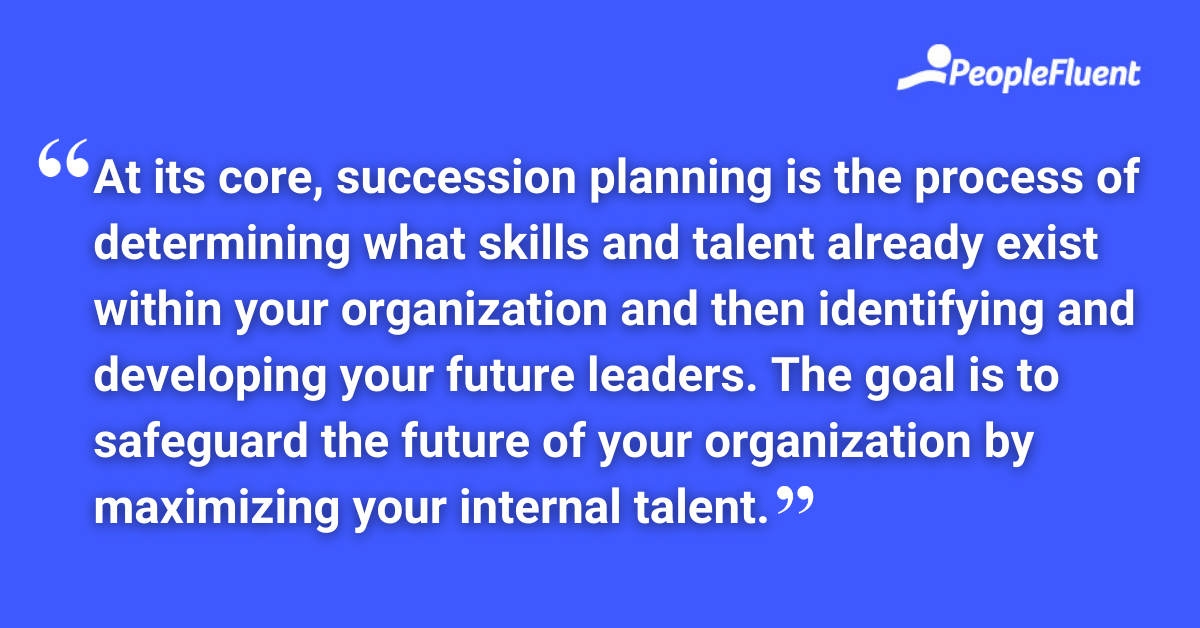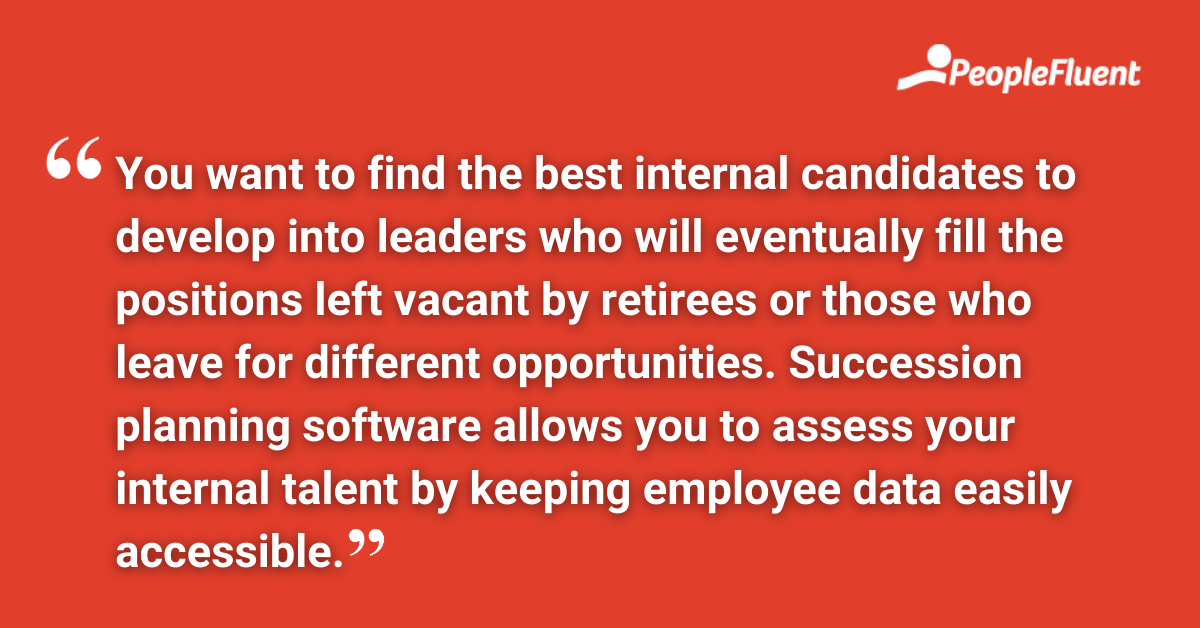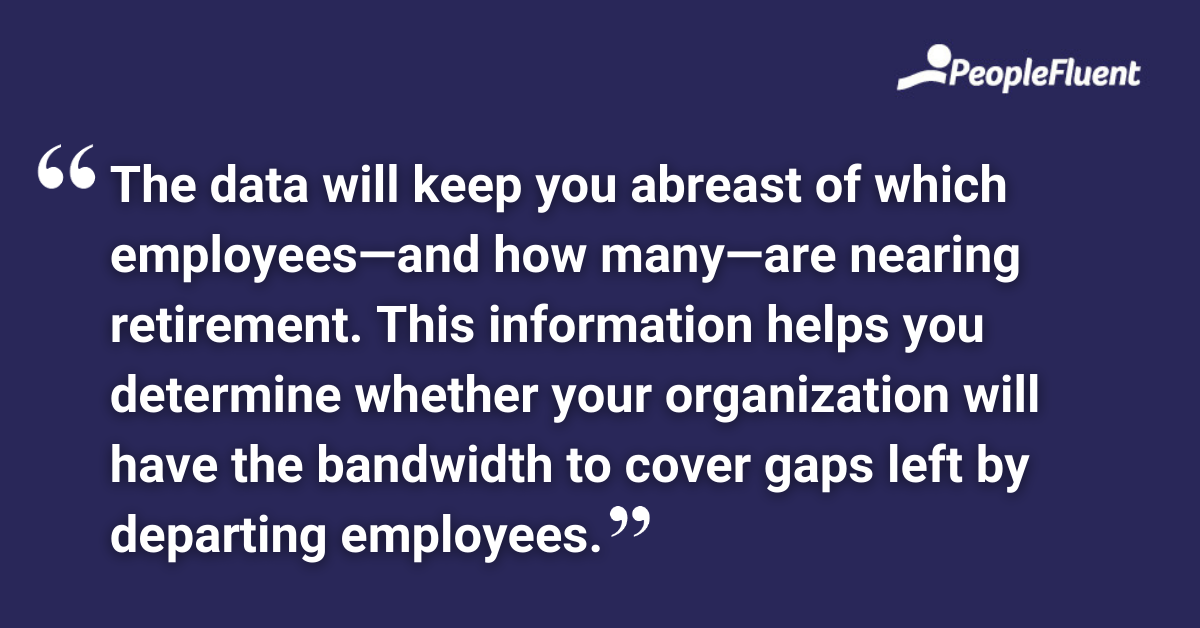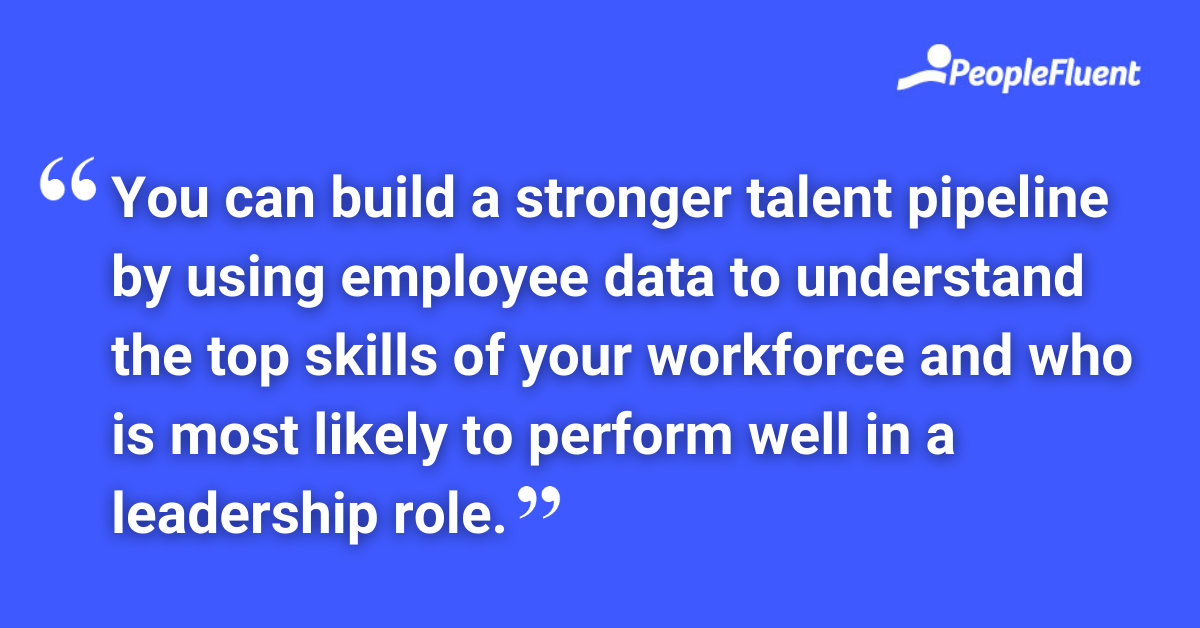Published: Jul 7, 2022Time to read: 6mins Category: Talent Management
How Succession Planning Can Future-Proof Your Organization for the “Great Retirement”
Today's constantly changing world makes succession planning a critical component of your talent strategy—especially as more and more people become eligible to retire. We’re approaching the peak of “The Great Retirement,” and now is the time to develop your employees to fill critical roles. Discover how to use succession planning to make data-driven decisions that will strengthen your internal talent pipeline and maintain continuity in your organization.
A 2021 survey revealed that only 21% of organizations have a formal succession plan. It’s a surprising statistic—especially considering today’s volatile employee market. As we’ve seen throughout the “Great Resignation”, without a formal succession plan, leaders are left scrambling to fill crucial positions when someone leaves their organization.
Finding a replacement with little notice can put managers in panic mode, and that can lead to the role being filled by someone who might not be the best fit for the job. These circumstances can often lead to productivity loss.
Planning for your organization's future is vital to its success, and succession planning helps companies stay ahead of turnover. Read on to learn how to develop top internal talent and ensure the future of your business.

LEARN MORE | ‘6 Foundations for Effective Succession Planning’
What Is Succession Planning and Why Is It Important?
At its core, succession planning is the process of determining what skills and talent already exist within your organization and then identifying and developing your future leaders. The goal is to safeguard the future of your organization by maximizing your internal talent. This is achieved by helping employees upskill internally while guiding them toward potential future roles within your organization.
Every employee brings something to the table. Succession planning software gives human resource professionals and business leaders the tools they need to highlight and develop employees within the organization that could one day fill other open positions. Data about each person’s skills and background allow you—and the employee—to make informed decisions about the potential next steps in their careers. Done well, succession planning benefits the future of your business and helps your employees reach their fullest potential.
Preparing for “The Great Retirement” and Beyond
In August 2021, the percentage of retirees in the U.S. grew to 19.3%, and many suggest this number will continue to rise. Since one in four U.S. workers is part of the Baby Boomer generation, every organization will continue to be impacted by these rising retirement rates.
The last thing you want is to be blindsided when employees occupying your top-tier positions start announcing their retirements. Organizations need to examine their internal workforce now to be ready for the future.

KEEP READING | ‘How to Attract the Next Generation of Talent’
How to Start Your Succession Planning
Your succession plan can be as simple or complex as you need it to be—it all depends on your organization. A good place to start is identifying the positions in your business that are responsible for “running the show.” Think of it this way: if a current employee left your organization tomorrow with no notice—and their departure were to throw things into chaos—then that role needs to be part of your immediate succession plan. Ideally, you will eventually have succession plans in place for every position in your organization.
The next step is identifying potential successors. You want to find the best internal candidates to develop into leaders who will eventually fill the positions left vacant by retirees or those who leave for different opportunities. The best succession planning software allows you to assess your internal talent by keeping employee data easily accessible.
Sophisticated software can even import your employee data from your HRIS system to build employee talent profiles and create talent pools. Managers and other senior leaders can access talent profiles across the organization. This means you could find the perfect internal candidate from a completely different department in your organization. Talent pools in succession planning software can also help with developing your diversity, equity, and inclusion efforts.
All of this data helps you avoid promoting individuals who might not be a good fit. Plenty of people are great at their current jobs, but that doesn’t necessarily mean that they’re ready to climb the ladder. A lateral career move in another department could be a better fit for their skillset. Making decisions backed by data also helps you avoid the perception of “playing favorites” among your employees.
As you continue to build your organization’s succession plan, you’ll find that with the right software, there are also many benefits for individuals. Employees can look at the roles that exist within your organization and match their competencies to potential future careers. This can then lead to mentoring and upskilling opportunities—all completely internally! Formal succession planning helps boost workforce morale by promoting a culture of internal development.

JUST FOR YOU | ‘5 Questions That Get to the Heart of Why People Analytics Matters’
Inform Your Succession Plan With Data
The right succession planning tool will give you the power to analyze data about your employees and make future-forward decisions. Detailed employee data in succession planning is most frequently used by top-tier managers and organizational leaders. It gives you insights about your employees, such as which people are the best fit for the business and what they might be up to. Succession planning software can also provide managers with the ability to add their recommendations for an employee’s potential future position in the organization.
Sophisticated succession planning software brings together employee data like:
- Work history
- Skills and behavioral competencies assessments
- Career aspirations
- Potential, promotability, flight risk, and loss impact
- Development, retention, and retirement plans
With so much employee data together in one place, you’ll have greater insight into which roles will require replacements and when those replacements will be needed. Likewise, the data will keep you abreast of which employees—and how many—are nearing retirement. This information helps you determine whether your organization will have the bandwidth to cover gaps left by departing employees.
Employee trend data also tells your organizational leaders which employees are likely the best fit for leadership development. Information about employees’ skills and previous experiences can help you decide how to allocate resources for training potential candidates and developing their skills. You’ll also be able to predict when potential candidates might be ready to move up into a new role.

MORE ON DATA | ‘3 Big Ways to Overcome Common People Analytics Obstacles’
Be Ready for Tomorrow… Today
All this information can—and should—be used to inform your succession planning. You can build a stronger talent pipeline by using employee data to understand the top skills of your workforce and who is most likely to perform well in a leadership role. You’ll also stay ahead of upcoming retirement announcements, so you can maintain your workflows when your leadership team decides to step down. Succession planning keeps you ready to confidently face the future.
Build a Succession Plan Backed by Employee Data
Analyze employee trends and make the right decisions about who your next leaders will be with PeopleFluent Succession. Request a demo or contact our sales team today!